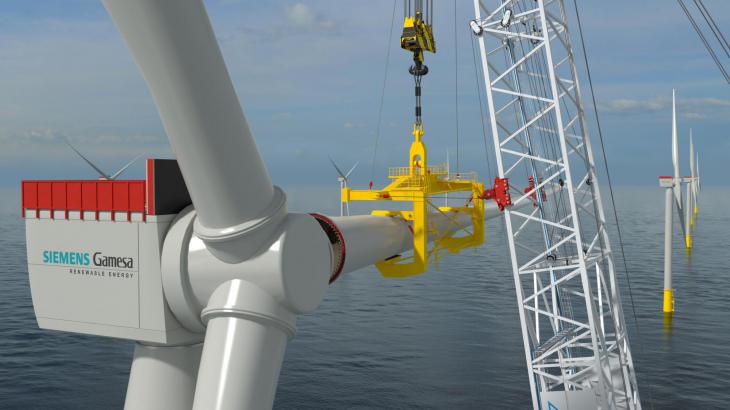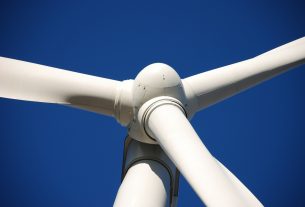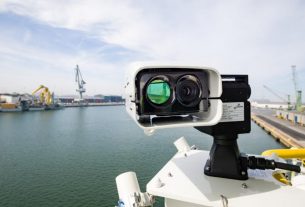The Netherlands – Together, Huisman and Siemens Gamesa have developed a method to stabilize wind turbine parts while they are being installed, particularly the blades but also the nacelles and tower segments.
Due to wind load, it has proven difficult to control the movements of a turbine’s comparatively light blades when suspended from a crane. Huisman and Siemens Gamesa created the Travelling Load Stabilizing System for universal use in big lifting cranes to save operational downtime and improve the integrity of the fragile wind turbine components.
Tuggers
To manage the location of the load, the system combines two pairs of tuggers that operate simultaneously. One pair is mounted on independent trolleys that can move along a built-in rail along the strong boom of the crane. To preserve the best configuration for the tugger line, the trolleys automatically follow the main block. A force perpendicular to the first pair of tuggers is provided by the second pair of tugger lines, which are deployed from the crane’s tip. The device offers substantially greater control than a typical single pair of tuggers since it approaches the weight from two different directions.
In contrast to traditional tugger systems that rely on continual tension, a specially built control system holds the actual location of the load, resulting in a much firmer restraint and a higher position accuracy. In the event of a sudden overload, the system will yield, but it will return to its setpoint position as the force falls back below the threshold.
Since the Travelling Load Stabilizing System is an essential component of the crane, it may be controlled both from the crane’s cabin and an optional walkaround box (WAB).




